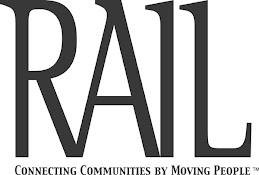About 40 miles north and west of downtown Chicago, two Metra commuter rail lines come together near Libertyville, Illinois. Although the actual intersection of the routes is a few hundred yards away, both lines serve passengers at stations with the same name – Prairie Crossing, separated by the span of a parking lot. Why is the genesis for two different rail lines serving the same location and how common is such a connection elsewhere in North American passenger rail?
The Milwaukee Road – officially, the Chicago, Milwaukee, St. Paul and Pacific Railroad – first reached the Libertyville area in 1881 as a spur off its main line between Chicago and Milwaukee. Meanwhile, the Wisconsin Central Railway arrived in 1886 on its route between Chicago and Fond du Lac. The railroads competed for the business of not only long-distance passengers and freight on their respective lines, but also for Chicago-bound daily workers, and commuter trains were established on both railroads shortly after their completion. And while intercity passenger traffic dwindled after World War II, both lines maintained healthy commuter traffic through the 1960s and 70s. Indeed, the Chicagoland area was served by a number of railroads operating independent commuter rail operations as late as the 1980s.
Concerned about the loss of vital commuter rail service should the railroads abandon their operations, the Regional Transportation Authority (RTA) was formed in 1974 to coordinate not only commuter rail service (Metra), but also the Chicago Transit Authority (CTA) and the suburban Pace bus system. Gradually, it assumed control of the commuter operations of the various railroads into a unified network, including the Milwaukee Road's route to Fox Lake, Ill., and the Wisconsin Central's line to Antioch, Ill., both of which served independent stations in Libertyville. Beyond ensuring continued service on these lines and purchasing new locomotives and railcars, it also sought to improve connections between its routes where possible. One such connection became the jointly named stations that exist today at Prairie Crossing, although both lines continue to serve their respective Libertyville stations.
Today's Milwaukee District/North line service marks the previous Milwaukee Road operation as it arches northwest from Chicago's Union Station through communities such as Glenview and Northbrook through Prairie Crossing to reach the peninsula community of Fox Lake. At the same time, the current North Central Service retraces the Wisconsin Central route south-by-southeast from Antioch to Prairie Crossing and continuing through Buffalo Grove and Rosemont before linking up with the Milwaukee District/West line at Franklin Park to reach Union Station. The Milwaukee District/North operation carries more than 25,000 riders each day while the North Central Service moves another 5,600. Interestingly, the ownership of the lines has evolved into control by two Canadian-based freight operators, the Canadian Pacific and Canadian National, respectively.
 |
| Metra Milwaukee District North train #2134 approaching Prairie Crossing |
 |
| Prairie Crossing station on North Central Service line |
Elsewhere, Montreal's Agence Metropolitaine de Transport (AMT) finds its Deux Montagnes and Blainville lines passing each other, but not connecting near Canora – again reflecting the battle between CN and CP – while the Chestnut Hill East and West Regional Rail lines of the Southeastern Pennsylvania Public Transportation Authority (SEPTA) terminate within blocks of each other, accounting for the competition between the Reading and Pennsylvania railroads for Chestnut Hill-Philadelphia commuters.
Although new passenger rail services – including high-speed, intercity and commuter modes – will be made available over coming years, its unlikely that any will offer the redundancy of competing routes since they will be made possible by public investment. In the meantime, rail passengers will continue to use these holdovers from the halcyon days of railroading, when competitors laid down tracks within sight of each other and mobilized communities in the process.
 |
| Milwaukee District North train 2113 |
 |
| North Central Service Prairie Crossing Depot and Platform |
 |
| Crossover between Milwaukee District North and North Central Service routes marked by the signal in the distance. |
 |
| North Central Service trackage across the prairie from the Milwaukee North District platform. |






In 1997 I had an internship at the Sears & Roebuck Int'l HQ near Prairie Crossing stop, although I don't think it was there yet. Thanks for the memories. Give my best regards to RMD and wish him well on his retirement from politics.
ReplyDelete